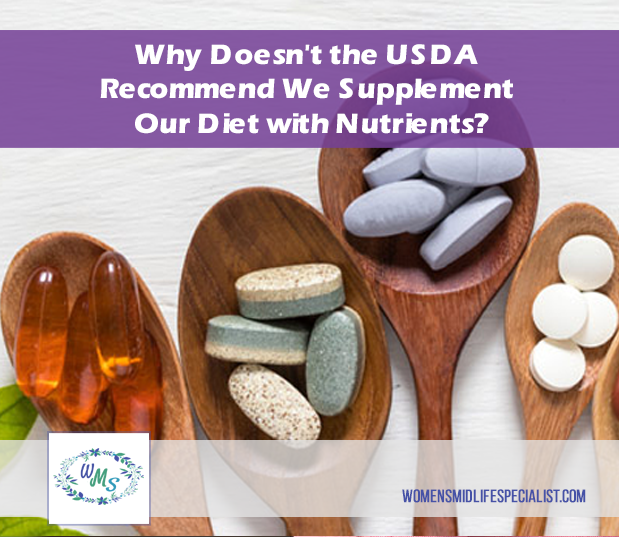Why Doesn't the USDA Recommend We Supplement Our Diet with Nutrients?

Every 5 years, the United States Department of Agriculture releases a new edition for Dietary Guidelines. In these guidelines, the USDA includes a comprehensive chart that reveals the amounts of nutrients that Americans are consuming. They gather this data by surveying tens of thousands of volunteers who report their daily food diet. This is a subjective study, but better than nothing!

But what is important to be aware of is the fact that research has shown that people tend to over-estimate their consumption of healthy foods while under-estimating their intake of fast food and processed foods.
Therefore, the results that the USDA report are likely to underestimate the amounts of vitamins and minerals! In the most recent Edition of the USDA Dietary Guidelines report, out of 8500 from the first survey and 7027 from the second survey, about half of all Americans are getting amounts below the Estimated Average Requirement or Adequate Intake levels of potassium, dietary fiber, choline, magnesium, calcium, and vitamins A, D, E, and C. Iron is also listed as deficient in adolescent girls and women who are still menstruating.
Numerous forms of Vitamin B are listed as vitamins being marginally consumed by only half of all Americans. WHY DOESN'T THE USDA RECOMMEND WE SUPPLEMENT OUR DIET WITH NUTRIENTS? Those of you reading this right now are the people who want to go beyond the understanding of a 3rd grade level on nutrient and hormone supplementation. You are the very ones who can benefit from understanding more about what more advanced researchers are discovering and uncovering every day. But imagine first the difficulty that any government agency has in committing to any particular type of supplement. Nothing occurs before an extensive number of years of an American derived study, Medical Societies and Big Pharma's interests considered, and any other agency with an interest first approving the recommendations.
Imagine the NIH or the USDA admitting that the best supplements we could take are pharmaceutical grade nutrients and Bio-identical Hormones! The vast majority of the population would say... "Huh? What?" Fortunately, the information YOU need is easily available in reports like this one. And you have what you need to make the right decisions for YOURSELF. Imagine yourself being part of a government agency that is taking some form of responsibility for the American people as a whole. Now imagine telling the public that they need to take a host of nutrients to support their diet. That in and of itself is a huge problem with ramifications difficult to comprehend. There would be a plethora of questions asked that would put the Government into quite a predicament - and one they might not ever be able to renege on.
"Why?" "Which ones?" "What type?" "How much?" "How do I afford them?" and so forth! It would be the start of a Government nightmare. Offering diet recommendations is a lot safer and certainly doesn't hurt! The USDA Dietary Guidelines is actually a complete document describing to the American people what nutrients they are deficient in and making recommendations on how to change their diet in order to get better nutrition at basically a 3rd grade level. It's better than nothing at all, and offers some good guidance.
However, there is no admission that they are well aware their guidance is emitting a valuable recommendation - essential nutrient supplementation! And if you really want to grasp the full meaning of what this says, you need to know that the standards of the "Estimated Average Requirement" and the "Adequate Intake Level" are far less than known levels of nutrients for OPTIMAL health. This also doesn't take into account nutrients needed to counteract modern day environmental toxins, genetic variability, an unhealthy GUT, medical illnesses, medications which interfere with nutrient absorption, rising stress levels and sleep deprivation, and so forth.


Leave a comment